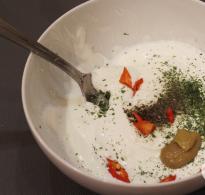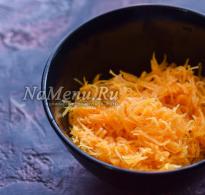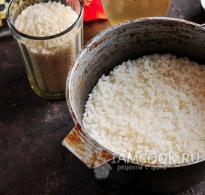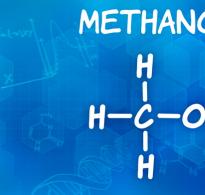What does dry wine mean? What is dry wine and how does it differ from other types
It will be useful for every wine lover to understand the theory of this ancient drink: study the classification and production methods, read about winemaking regions and grape varieties. Deep knowledge about the drink will help you choose more quality wines and find the perfect gastronomic combinations. Today we will try to delve into the subtleties and find out how the floor differs dry wine from dry.
The main difference between semi-dry and dry wine is the concentration of sugar. If the fermentation process grape juice takes place without the intervention of the winemaker, the residual sugar is completely fermented, and a dry wine is obtained - it contains no more than 0.3% sugar (up to 4 grams per liter, according to Russian standards). When the winemaker deliberately stops the fermentation process at a certain stage, the resulting semi-dry wine contains 4-18 grams of sugar per liter. To stop fermentation, heating or cooling the wort is used, and less often, adding alcohol. Sometimes winemakers use some high-sugar grape varieties, dried and botrytised grapes to produce wine with residual sugar. Next, semi-dry wines are also aged in barrels or bottles before reaching the buyer’s table.
Labeling of semi-dry wines
The differences between dry wine and semi-dry wine are clearly indicated on the label: if it is on English, you will see the words semi dry or medium dry, and in the case of dry - only the word dry. French semi-dry ones are labeled as vin demi-sec, Italian - semi-secco, Spanish - semi-seco. You can also find a line with sugar content, which is always present on the label.

Taste of semi-dry wines
You can also distinguish wine by taste: dry wine is often tart, tannic and rather aggressive in taste. Taking a sip of dry wine, you will feel how it knits and literally dries oral cavity a couple of moments after taking a sip. Semi-dry wine tastes more harmonious, its acidity and tannin are lower. If you are used to drinking semi-sweet wines, like many Russians, semi-dry wine will be a good transition option for getting used to the taste of dry wine.
What to drink with?
How to find a good gastronomic pairing for semi-dry wines? Red semi-dry goes well with meat, hard and sharp cheeses. White - with fish, seafood, medium-aged cheeses.
Initially, people did not interfere with the fermentation process of grape juice, so in most cases the result was only dry wine with low content Sahara. Sweet alcohol came out only from overripe berries or varieties with increased content glucose.
Today, technology makes it possible to create drinks with different sugar contents. Nevertheless, natural dry brands produced without additives firmly hold the lead in the world market in terms of sales. Experts evaluate the state of winemaking in the region based on the quality of the product produced.
Connoisseurs claim that the absence of sweetness allows the bouquet of the drink to reveal itself to the maximum, to feel the natural sourness, astringency and noble flavor notes. Another reason why dry wines are valued is that production technology does not allow one to mask flaws finished product. White varieties are characterized by a sour aftertaste, while red varieties are characterized by astringency.
What is dry wine
Why it is dry, from a physiological point of view, is explained by the content of tannins - phenolic compounds of plant origin. They have tanning properties and tart, astringent taste, which causes the mouth to feel dry. They impart complexity and characteristic bitterness to the taste, and are felt taste buds the middle part of the tongue and the anterior zone of the oral cavity.
Tannins enter the drink from grape skins, seeds and ridges, and from oak barrels. There are more tannins in red varieties, because during their production the contact of juice with the hard parts of the grape lasts longer. Dry red wines are capable of long aging due to the presence of tannins.
From the point of view of the international classification, dry wines are natural table wines in which the sugar is completely fermented - “to dryness”. In the final product there is no more than 0.3% (4 g/l). The strength of such drinks ranges from 8.5-15% vol. According to classification French wines, “dry” (Vinsec) includes varieties containing less than 2 g of sugar per 1 liter.
The taste is affected by the strength and acidity of the drink. The higher the alcohol content, the higher the subjective sweetness. The higher the acidity, the lower the sweetness.
Popular and best types of alcohol
Popular varieties of white:
- “Soave” is Italian, named after the region where it is produced.
- Pinot Grigio - Italian fruity, slightly mineral, with a floral aroma and a piquant bitterness in the aftertaste.
- Chardonnay. Alcohol aged in barrels is sweeter, while alcohol aged in steel containers is sour. The product from Chile and South America has a rich creamy taste with a fruity aftertaste. Wine from the Chardonnay-Chablis variety has a light, refreshing taste.
- Alcohol from the French province of Alsace: Riesling and Pinot Gris. They are fresh, aromatic, with a delicate taste and characteristic sourness.
- Riesling trocken is a German brand with a distinctive sour taste.
- "Lafoa" - Italian drink from the Sauvignon grape variety with herbaceous notes in the bouquet.
- Sencerre is a French sauvignon with flint notes.
- Muscadet - French, high acidity, excellent for seafood.
Popular dry red wines:
- Merlot is a drink with low astringency and a delicate aroma.
- Shiraz is an Australian wine with a bright and rich bouquet.
- Malbec is an Argentine brand with a soft but bright taste and aroma with a berry-spicy bouquet.
- Cabernet Sauvignon.
- Tannat is a Uruguayan alcohol.
- Chianti Rufina.
- Margaux Cru Bourgeois - French classic Bordeaux.
Popular semi-dry wines: Merlot, Chianti, Aligote, Feteasca.
What are dry wines served with?
When served, dry red wines should be at a temperature of +16...+18ºС, at which the bouquet reveals itself more fully. They are served in Bordeaux type glasses with a wide bowl and a narrow rim. White ones are cooled to +10…+12ºС and served in smaller containers. Red wine is poured into a glass up to half, white wine - 2/3.
Red varieties are served with cheeses. The drier the variety, the more ripe and sweet the cheese should be. Baked pork, bacon, ham, and raw smoked sausages are best suited as a meat snack.
Can be served fried, fatty or spicy meat dish. Spaghetti and pizza will do. The combination of red dry drinks with seafood: fish (salmon, trout), crabs, oysters is also becoming common. According to the fashionable “fusion” trend, such wines are consumed from land. You can serve sweet fruits (pears, nectarines, peaches, mangoes), berries, vegetables.
White wines are consumed with mild meat appetizers, game, poultry, mature cheeses, fish (salmon, tuna), caviar and seafood, white meat, low-fat sausages, salads without vinegar, and first courses. These varieties are suitable for desserts - sweet fruits and berries, sweets, chocolate, ice cream, tea or coffee.
Semi-dry wine is more versatile. It is served with cold and hot meat snacks, for fish, seafood, desserts.
How does it differ from semi-dry, semi-sweet, fortified
The difference between dry wine and semi-dry wine is that the latter retains from 4 to 18 g of sugar in 1 liter during the fermentation process. In order to obtain a product with such a sugar content, fermentation is stopped.
Special machines stop the process of heating the wort or forcefully cool it to +4…+5ºС. Semi-dry drinks are made from white, red, pink grape varieties that contain 20-22% sugars (Cabernet Sauvignon, White Feteasca, Malbec, Muscat, Isabella, Lydia). After fermentation stops, the wine matures within a month. At the same time, the strength does not increase.
It’s easy to figure out the difference between semi-dry wine and semi-sweet wine. Semi-sweet varieties contain from 3 to 8% sugars (18-45 g/l) at the same strength. They are different mild taste. They are produced from the same varieties of vines as semi-dry ones. The fermentation process is stopped earlier.
Semi-sweet wine can be obtained from berries that are overripe and picked after the first frost. For this purpose, the temperature is reduced to 0ºC or raised to +70ºC, sulfur dioxide is introduced into the semi-finished product, the yeast is separated, filtered and left to mature for clarification.
Fortified is made by complete or partial fermentation of wort with the addition of wine alcohol. Depending on at what stage of the process alcohol is introduced into the product, the wine will be classified as dry, semi-dry, semi-sweet or sweet. Dry fortified brands contain alcohol in an amount of 17-21% vol. and 30-120 g/l. For the production of dry fortified drinks, varieties containing 24-26% sugars are selected.
How to choose a quality drink
On the labels, dry drinks are marked as “dry”, dry (English), sec (French), secco (Italian), trocken (German). Italians label semi-dry wine as Semi-secco. The French extract alcohol from late harvest grapes (Tardive) and from berries with noble mold (Trie).
The label must indicate the manufacturer, region, and year of harvest. The grape variety is often indicated. The exception is wines from France, where it is legally prohibited to indicate the variety of vine on the label.
The bottle must indicate the year of aging in the barrel and in the bottle. Low-quality and cheap products are not kept in barrels, because it does not pay off. The absence of a year of aging on the label may mean that the drink is made from concentrate. The mark of national quality control must be indicated.
High-quality drinks are bottled only in glass containers. The color of the glass should be dark green or brown to limit exposure of the product to sunlight. Cork is only used from balsa wood.
“Which country’s wine do you prefer at this time of day?” - Woland asked the confused and discouraged barman Sokov and was very disappointed with his answer “I don’t drink...” Despite the irony towards his unlucky character, M. Bulgakov was absolutely right: knowing when and what kind of wine to serve is a real art. Being able to determine the variety and quality of wine is the first step to its heights.
According to the production method, sugar and alcohol content, wines are divided into table wines: dry, semi-dry and semi-sweet; fortified, which includes dessert sweets, liqueurs and flavored ones; special ones, which include ports, sherry, Madeira and some other types of wine.
Dry production technology natural wines is based on the complete fermentation of sugar contained in must - wine material consisting of grape juice and pulp. The maturation of dry wine lasts 3-4 months, during which the drink acquires a delicate bouquet and self-clarifies. Dry white wines have delicate taste and golden straw color; Reds are dominated by ruby or garnet shades; they are tart and have a pronounced fruity aroma.
Dry wine
The strength of dry wines does not exceed 11% with a sugar content of 1%. The best varieties are dry white wines Riesling, Rkatsiteli, Aligote, Sauvignon and red Saperavi, Cabernet, Merlot, Pinot Franc.
Dry white wine goes well with white meat, fish, mushroom dishes and vegetables. Red is served to fried meat.
Semi-dry wine
Semi-dry wines are produced by partial fermentation of sugars without the addition of alcohol. When the percentage of sugar reaches 1-2.5, the fermentation process is stopped, reducing the temperature of the wine material to 4-5 degrees. The wine is allowed to ripen: so that the aromatic, tannin and nutrients from the pulp are completely transferred into ready drink, it is left for 30 days in large closed containers. During this time, the strength of the wine does not increase; it contains only 9-14% of revolutions, which allows it to be used as a pleasant and healthy addition to the table where the whole family gathers every day.
To produce semi-dry wines, white, red and rose grape varieties with a sugar content of 20-22% are used. These primarily include Cabernet Sauvignon, White Feteasca, Malbec, White Muscat, Isabella and Lydia.
Semi-sweet wine
Particularly popular among connoisseurs good wines used semi-sweet, with a soft pleasant taste, the harmony of a delicate bouquet and rich, vibrant color. They contain 3-8% sugar, and their strength does not exceed 10-12%.
For semi-sweet wines, as well as for semi-dry ones, the optimal sugar content of grapes should be at least 20%. This indicator is given by varieties that ripen by mid-October. The leaders among them are Muscat and Merlot.
Semi-sweet wines are capricious, and the process of their preparation is quite labor-intensive. It is very important to stop fermentation in time to obtain sugar and alcohol content appropriate for the type of wine. It is equally important to stabilize the composition of the wine material for fermentation during technological treatments and storage.
To stop fermentation, its temperature is reduced to 0 degrees or, conversely, increased to 65-70 degrees. By introducing sulfur dioxide into the semi-finished wine product, the yeast component is separated from the fermenting wort, then the drink is filtered and left for natural clarification.
Semi-sweet dry wines are stored in glass bottles, pre-pasteurizing the finished product.
A wine bottle is not just a container. Its shape, color, and volume are not chosen by chance. In France, the length of the neck and the size of the bottle determine the eliteness of the drink. The richer its history, the higher the neck. But even more important is the length of the cork, made from the bark of the cork tree. The longer it is, the more expensive wine. The name of the abbey, castle or famous area where this type of wine is produced, as well as the year of its release, must be indicated on the cork.
Among the wines that can compete with French ones are: best brands, produced by winemakers in Georgia, Moldova and Crimea. Crimean dessert wines are especially famous. For their production, grapes are used high content Sahara. These are the famous varieties Muscat white, Muscat pink, Muscat red, grown in the Red Stone Valley with its unique microclimate, as well as Aleatico and Muscatel, Italian and French varieties, perfectly adapted to Crimean conditions. Their sugar content is 25-40%.
Dessert wine
To get dessert wine high quality, manufacturers use special techniques due to which the normal course of fermentation slows down at a certain stage. This allows you to maintain the desired percentage of sugar in the wine. In dessert wines it should be between 10 and 20%. The main way to stop fermentation is to introduce alcohol into the fermented wort. The drink acquires sufficient strength while maintaining sweetness, aroma, great taste and expressive color.
When making dessert wines, the technique of infusing the must on pulp is also used. At a certain stage of fermentation, the pulp is heated and alcoholized. Wines obtained in this way have a rich bouquet and delicate velvety taste. They are kept in oak barrels within 2-3 years - and wine becomes a truly divine drink.
The strength of dessert wines is 17-18%. Among the best varieties– “Black Doctor”, “White Muscat of Red Stone”, “White Muscat Livadia”, “Cahors”. These wines do not age: with age they taste qualities only getting better.
Not inferior to them are the Kuban blended brands “Old Nectar”, “Sun in a Glass”, “ Sunny Valley" They are called blended because they are made from different varieties grapes taken in a certain proportion.
Conclusions website
- Dry, semi-dry and semi-sweet wines are produced without the introduction of alcohol. Dessert wines are fortified, that is, containing alcohol.
- The strength of dry wines does not exceed 11% with a sugar content of 1%. Semi-dry and semi-sweet wines contain from 3 to 8% sugar, but their strength is only 12-14%. Dessert wines are sweet. The percentage of sugar in them is from 10 to 20% with a strength of 17-18%.
- Table wines, which include dry, semi-dry and semi-sweet, are served with main courses. Dessert - for dessert.
- Dry, semi-dry and semi-sweet wines do not have long term storage Dessert wines only improve their taste over time.
Among lovers of wine products, there is an opinion that dry wine is a drink to which neither water nor sugar has been added. Professionals have their own gradation. They classify wines depending on the stage of completion of the alcoholic process of fermentation of the must and its transformation into the final product. Table or dry wine is the main result of the work of specialists. It is from it that a wide range of vintage, ordinary, and also collectible drinks are obtained.
According to the French chemist Louis Pasteur, who stood at the origins of immunology and microbiology, dry wine is the purest, most useful and healthy product. This natural drink contains in its composition produced from the percentage of which ranges from nine to fourteen. In my own way chemical composition Dry wines are a complex product. In addition to water and ethyl alcohol they contain organic acids that are valuable for the body, as well as glucose, fructose, vitamins, enzymes and mineral elements.

Modern scientists have proven that constant intake of dry wine, if within reasonable limits, prevents the occurrence of diseases of the blood vessels and heart muscle. This ability of the grape drink is associated with the content of biologically active elements in it - quercetin and flavonoids. (dry) has the ability to prevent the development of cancer and diabetes. It improves blood purification and increases life expectancy. All these processes occur thanks to active components drinks, which are powerful antioxidants.
Dry wines are classified depending on the types of grapes used for their preparation. The drink can be obtained by fermenting the juice of Cabernet, Lambrusco, Merlot, Sauvignon, Aglianico, Negrette and others. In this case, experts classify it as a group of dry red wines.

The final juice fermentation product can be obtained from white, red or pink varieties. It will be classified as a dry white wine if the skins of the berries have been previously removed and the resulting juice has virtually no color. IN in this case Varieties such as Riesling, Tokaj, Vernacha, Greco, Chardonnay, Muscat and others are used.
The assortment list of dry wines is divided into:
1. Ordinary. They are not aged and are considered ready for consumption immediately after the remaining yeast is removed, the fermentation process is completely completed, and filtration and clarification are performed.
2. Vintage. These drinks are aged for a specific period of more than one year. The production of these wines can be made from several or from one
And finally, collectibles. These products undergo many years of aging in a wine storage facility.
Red semi-dry wine is one of the most popular alcoholic drinks. It contains a lot of different minerals and vitamins, therefore, when consumed adequately, it has a beneficial effect on human health and well-being. This wine goes well with different dishes, allowing you to more fully reveal their taste.
Peculiarities
A good red semi-dry wine is a natural alcoholic drink based on grapes. It is characterized by the presence of alcohol from 9 to 13% and a sugar content of 5-25 g/dm³.
The drink is usually divided into two subspecies. The first is called natural semi-dry wine. This option is obtained with incomplete fermentation or pulp. The second type is table red semi-dry wine. This drink is made by adding grape must or its concentrate.
The drink has an attractive color - from light red to dark burgundy. In addition, it perfectly preserves the unique varietal aroma and reveals additional fruity and floral tones. This is a unique feature that semi-dry red wine has. Consumer reviews also indicate that the drink is very harmonious and fresh taste without oxidation, but with slight astringency.
Manufacturing method
This drink is made in the same way as red. To do this, the fermentation process stops when the mixture reaches a certain sugar concentration. Most often, it is red semi-dry wine that is the basis from which the semi-sweet drink is produced.
Since all table wines are rather unstable products, the basis of their production process is the need to ensure biological stabilization. This is understood as a set of processing procedures aimed at eliminating cloudiness that appears due to the presence of microorganisms in wine. There are currently three methods of stabilization.

- Biological nitrogen reduction involves the removal of various nutrients, which are necessary for the life of bacteria. This option allows you to obtain high-quality wines, but does not guarantee the complete absence of microorganisms.
- Physical stabilization foresees heat treatment, wine filtration, as well as its ultrasonic treatment. These processes allow you to destroy microorganisms and stop the fermentation process.
- Chemical stabilization involves the use of a variety of preservatives that are approved for use in the food industry, including sorbic and
Each option has its positive and negative aspects, That's why perfect way does not exist. The taste and taste depend on the type of fermentation stop. appearance guilt.
Benefit
In addition to its unique gastronomic characteristics, red semi-dry wine also has positive influence on human body. This is due to the fact that the drink contains antioxidants, minerals and vitamins. That is why the semi-dry version is not inferior in quality to the dry one.
According to scientific research, 150-300 grams of the drink have positive impact on the cerebral cortex, and also have a good effect on cardiovascular system. Besides, this product also acts as an aphrodisiac. The wine acquires a similar effect due to the presence of rhodium and lithium in its composition.

In addition to this, the drink has other benefits:
- Prevents the development of atherosclerosis and reduces cholesterol levels.
- It also removes toxins from the body due to the presence of tannins.
- Wine is good for anemia because it contains iron and B vitamins.
- Restores vitality.
- Helps slow down cell aging.
- Maintains normal stomach acidity.
- Increases the secretion of endocrine glands.
- Improves sleep.
- Prevents the formation of tartar and caries.
However, it must be remembered that the positive effect is present only with moderate consumption of wine. If you have kidney problems, nervous system, as well as the digestive system, it is better to avoid wine. It should also be remembered that wine should not be consumed by children and adolescents, as it can disrupt their normal development, as well as pregnant and lactating women.
Energy value
The drink has the following energy value per 100 grams of product:

In accordance with this, the energy percentage ratio is as follows: proteins / fats / carbohydrates - 2/0/13. Safety for the waist is another advantage that semi-dry red wine has. The calorie content of the product is only 78 kcal.
Popular wines
As for wines, the most popular semi-dry options in our country are:
- "Merlot."
- "Chianti".
- "Bear's Blood"
- "Monastery Hut" and others.
Foreign options are also in demand, but their price is slightly higher.
What to drink with?
Not everyone prefers semi-dry wine. This is due to tartness and sourness. The right food, however, can show unique taste and the aroma that semi-dry red wine has. What should you drink this product with? The choice must be made towards the following:

For guests, you can prepare a special mix, combining cheese, pieces of meat and fruit. Such food removes excess acid in the wine and makes the taste harmonious and rich.






